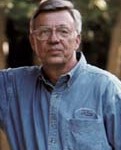Seeking to find a way to diversify the assets of the state’s pension fund and at the same time find a way to boost tourism, attract retirees and spur the economic growth of Alabama, Dr. David Bronner, CEO of the Retirement Systems of Alabama, borrowed as page from the movie, Field of Dreams, “build it and they will come.”
Instead of a baseball field, he had an even bigger dream, build a collection of eight public golf courses all over the state—all at the same time, the largest golf course construction project ever attempted.
The first piece of the puzzle was to get Bobby Vaughan, the former director of golf at Tanglewood in Clemmons, N.C., to put the plan in motion. Vaughan formed SunBelt Golf Corporation, which would develop, construct, operate and manage all 18 golf courses. Vaughan began hiring experts throughout the golf industry.
To design the courses, Vaughan reached out to possible architects, but a lot didn’t want to take on such a big project. That wasn’t the case with Robert Trent Jones Sr., who designed more than 500 courses worldwide. Nearing the end of his career, Jones called his lead designer Roger Rulewich in Ireland and told him to head immediately to Alabama,
Rulewich made the visit and decided to accept the challenge, working closely with Vaughan. Following the requests of Bronner, they were told to keep the design reasonable, but at the same time make them dramatic and challenging. For the accompanying short courses, the assignment was to design par 3s that you could lift out and put on a championship courses, not the usual pitch and putt designs. Each of the clubhouses featured the same design.
So Rulewich was indeed the true architectural force behind the project, not Jones, who was in the 80s at the time. Of course, having Jones to bounce ideas off didn’t hurt.
“It was the greatest time in my life,” Rulewich, who worked for 34 years with Jones, told a Birmingham reporter back in 2012. “It’s the greatest tribute to Jones.”
In a recent interview, Rulewich admitted that he and Vaughan did a lot of the design work by feel, making lots of adjustments in the field, but stayed close to Jones’ demand that par be protected with plenty of doglegs, uphill approaches, penal bunkers and undulating greens.
“The nice thing was that Bobby and I could bounce ideas off each other,” he said. “The courses weren’t easy to design and we had to move a lot of dirt. The weather, especially all the rain in Mobile, caused us some problems. We did a lot of driving between all the sites. It was physically exhausting.”
On one visit to Alabama, Rulewich flew down and Vaughan wasn’t there to meet him. Instead of driving from Mobile to Birmingham as the pair normally did, Rulewich had his secretary arrange for a flight. At the last moment, Vaughn showed up and they decided to drive. The flight Rulewich was scheduled to be on crashed and 18 people were killed. “That was definitely a narrow escape for me,” he admitted.
It took over 30 months to finish the original trail courses that included four with 36 holes plus 18-hole short layouts—Oxmoor Valley’s Lake and Links; Grand National’s Lake and Links; Hampton Cove’s Highland and River; and Magnolia Grove’s Crossing and Falls—plus three with 27 holes and a 9-hole short layout—Silver Lake’s Mindbreaker, Heartbreaker and Backbreaker; Cambrian Ridge’s Sherling, Canyon and Loblolly; and Highland Oaks’ Highland, Marshwood and Magnolia. They opened in 1992 and 1993.
After all eight sites were open, construction began on two new sites and today there are 11 courses with 468 holes that also include Capital Hill’s Legislator, Senator and Judge; The Shoals’ Fighting Joe and Schoolmaster; Ross Bridge (the newest addition); and Lakewood’s existing Dogwood and Azalea courses.
Rulewich, who is currently is working on a complete renovation of the Jones-designed Sotogrande in Spain, indicated that in recent years some “serious work” has been done on the original courses plus Lakewood, especially with the green complexes, to make them a little more player friendly.
“With more courses at each site, the nice thing is that you can take one course out of play for five or six months and still not have to close because there are other options,’’ he explained.
There’s no doubt that the RTJ Trail has achieved Bronner’s dream of being the finest collection of public courses in the world while giving Alabama an economic home run.

